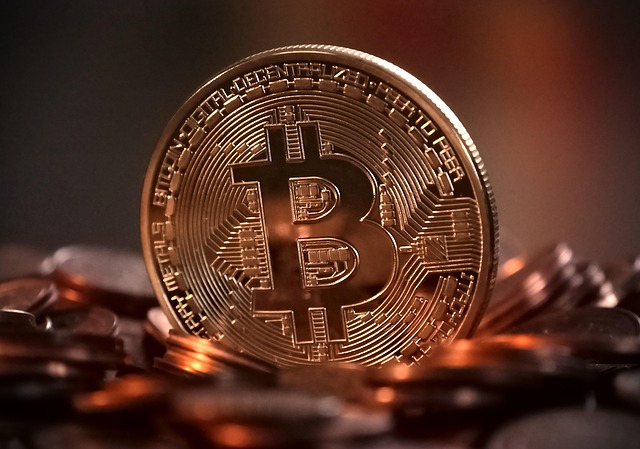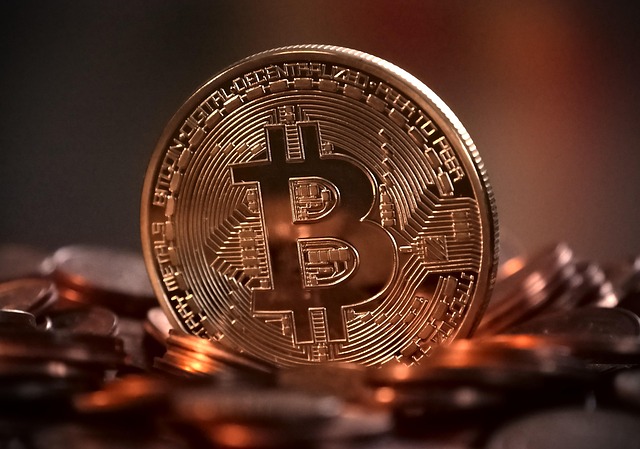Crypto donations top $1B in 2024, gain traction after Myanmar, Thailand quake
Binance co-founder Changpeng “CZ” Zhao donated over half a million dollars worth of crypto to the earthquake disaster relief effort in Thailand and Myanmar, in another testament to the growing utility of blockchain-based emergency charity efforts.Zhao donated 1,000 BNB (BNB) tokens worth almost $600,000 to the disaster relief funds for the region on March 3, blockchain data shows.Zhao donates 1,000 BNB. Source: BscScan“Sent 1000 BNB for the donation for Myanmar and Thailand,” wrote Zhao in an April 3 X post.The crypto donation comes after Thailand and Myanmar were hit by a 7.7 magnitude earthquake on March 28, causing severe damage to buildings and widespread flooding.Related: 70% chance of crypto bottoming before June amid trade fears: NansenAt least 2,719 people have been confirmed dead in Myanmar and 18 in Thailand, with 76 people still unaccounted for, according to the latest figures shared by Reuters.The $600,000 donation comes nearly a week after Zhao pledged to donate 500 BNB for the relief efforts, an initial commitment that he doubled. Cryptocurrency-based donations have emerged as a significant lifeline for the region, due to banking restrictions caused by damaged infrastructure.Source: The Giving BlockCrypto donations exceeded $1 billion in 2024, spurred by increasing digital asset valuations and growing crypto regulatory clarity. About 16% of the donations went toward education, while 14% went toward medicine and health-related efforts.The Giving Block has launched a crypto-based emergency relief effort for Myanmar and Thailand to raise $500,000 for the devastated region.Source: TheGivingBlockThe organization expects crypto donations to reach $2.5 billion in 2025 on growing crypto wealth generation and increasing adoption due to a more favorable political landscape.Related: Trump-linked crypto ventures may complicate US stablecoin policyCrypto donations gain traction for emergency relief effortsZhao’s donation is a testament to the growing role of cryptocurrency in humanitarian aid, according to Anndy Lian, author and intergovernmental blockchain expert.“Crypto donations, compared to traditional fiat contributions, offer unique advantages, especially in emergencies,” Lian told Cointelegraph, adding:“Speed is a key factor—transactions on blockchain networks can settle in minutes, bypassing the delays of banks or intermediaries, which is critical when time saves lives.”“In disaster-stricken areas like Myanmar or Thailand, where infrastructure might be compromised, crypto can reach recipients directly via digital wallets, no SWIFT codes or wire transfers required,” Lian explained.Source: Anndy LianLian also donated 44 BNB tokens to the relief efforts in Myanmar and Thailand, a move that was publicly praised by Zhao.Ethereum co-founder Vitalik Buterin has been known for his crypto donations. In October, Buterin donated over $180,000 in Ether (ETH) to the biotech charity Kanro.Magazine: GUN token’s $69M milestone, Pudgy Penguins go to LOL Land: Web3 Gamer
Bitcoin gets $71K target as tariffs deal rare US business outlook slump
Bitcoin (BTC) faces conditions similar to the 2022 bear market bottom as US business sees “very high risk” to come.In his latest analysis, Charles Edwards, the founder of quantitative Bitcoin and digital asset fund Capriole Investments, queried when the US would start printing money.”Higher than expected” US tariffs pressure BitcoinBitcoin reacted noticeably worse than US stocks after President Donald Trump announced worldwide reciprocal trade tariffs on April 2.BTC/USD fell up to 8.5% on the day, while the S&P 500 managed to end the Wall Street trading session 0.7% higher.Despite this, Edwards notes that US business expectations reflect the type of uncertainty seen only three times since the turn of the millennium.“Consider this as tariffs come in higher than expected. The Philly Fed Business Outlook survey is showing expectations today comparable to 2000, 2008 and 2022,” he told X followers.An accompanying chart showed the Philadelphia Fed’s Business Outlook Survey (BOS) back under 15 for the first time since the start of 2024. Late 2022, meanwhile, was the pit of the most recent crypto bear market when BTC/USD reversed at $15,600.Philadelphia Fed Business Outlook Survey vs. S&P 500. Source: Charles Edwards/XIn Capriole’s latest market update on March 31, Edwards acknowledged that BOS data can produce unreliable signals over market sentiment but argued that it should not be ignored.“While no guarantee of the future outlook (this metric does have false signals) this is a data reading we have had before at very high risk zones (year 2000, 2008 and 2022), telling us to keep a very open mind,” he wrote. “Especially if the tariff war escalates significantly beyond current expectations or corporate margins start to fall.”For Bitcoin, a key level to watch in the tariff aftermath is $91,000, with Capriole suggesting that US macroeconomic moves would “decide the ultimate technical trend from here.”“All else equal, a daily close above $91K would be a strong bullish reclaim signal,” the update explained alongside the weekly BTC/USD chart. “Failing that, a dip into the $71K zone would likely see a sizable bounce.”BTC/USD 1-day chart (screenshot). Source: Capriole InvestmentsBTC price focus on US liquidity trendAs Cointelegraph reported, a silver lining for crypto and risk assets could come in the form of increasing global liquidity.Related: Bitcoin sales at $109K all-time high ‘significantly below’ cycle tops — GlassnodeIn the US, the Fed has already begun to loosen tight financial policy, with bets on a return to so-called quantitative easing (QE) varying.“How long until the Powell printer starts humming?” Edwards queried.M2 money supply, meanwhile, is due for an “influx” — something which has historically spawned major BTC price upside.“The BIG take-away (the most important observation) is that a big M2 influx is coming. The exact date is less important,” popular analyst Colin Talks Crypto predicted in an X thread this week.A comparative chart hinted at a potential BTC price rebound by the start of May.US M2 money supply vs BTC/USD chart. Source: Colin Talks Crypto/XThis article does not contain investment advice or recommendations. Every investment and trading move involves risk, and readers should conduct their own research when making a decision.
Alabama, Minnesota lawmakers join US states pushing for Bitcoin reserves
Lawmakers in the US state of Minnesota and Alabama have filed companion bills to identical existing bills that will allow each state to buy Bitcoin.The Minnesota Bitcoin Act, or HF 2946, was introduced to the state’s House by Republican Representative Bernie Perryman on April 1, following an identical bill introduced on March 17 by GOP state Senator Jeremy Miller.Meanwhile, on the same day in Alabama, Republican Senator Will Barfoot introduced Senate Bill 283 while a bi-partisan group of Representatives led by Republican Mike Shaw filed the identical House Bill 482, which allows for the state to invest in crypto, but essentially limits it to Bitcoin (BTC).Twin Alabama bills don’t explicitly name BitcoinMinnesota’s Bitcoin Act would allow the state’s investment board to invest state assets in Bitcoin and other cryptocurrencies and permit state employees to add crypto to retirement accounts.It would also exempt crypto gains from state income taxes and give residents the option to pay state taxes and fees with Bitcoin.Source: Bitcoin LawsThe twin Alabama bills don’t explicitly name Bitcoin, but it would limit the state’s crypto investment into assets that have a minimum market value of $750 billion — a criterion that only Bitcoin currently meets.26 Bitcoin reserve bills now introduced in the USIntroducing identical bills is not uncommon in the US and is typically done to speed up the legislative process so laws can pass more quickly.Bills to create a Bitcoin reserve have been introduced in 26 US states, with Arizona currently the closest to passing a law to make one, according to data from the bill tracking website Bitcoin Laws.Arizona currently leads in the US state Bitcoin reserve race. Source: Bitcoin LawsPennsylvania was one of the first US states to introduce a Bitcoin reserve bill in November 2024. However, the initiative was reportedly eventually rejected, with similar bills also killed in Montana, North Dakota, South Dakota, and Wyoming.Related: North Carolina bills would add crypto to state’s retirement system Montana, North Dakota, Pennsylvania, South Dakota and Wyoming are the five states that rejected Bitcoin reserve initiatives. Source: Bitcoin LawsAccording to a March 3 report by Barron’s, “red states” like Montana have likely faced setbacks to the Bitcoin reserve initiatives due to political confrontation of the Democratic Party with the Republican Party.Additional reporting by Helen Partz.Magazine: Financial nihilism in crypto is over — It’s time to dream big again
Treasure DAO announces huge pivot in hopes of extending runway to February
Decentralized video game ecosystem Treasure DAO is restructuring as “a matter of survival” to extend its financial runway to at least February 2026.Treasure DAO’s chief contributor John Patten says in an April 2 video posted to X that he has resumed a leadership role and is taking a plan to the DAO to streamline operations, eliminate unnecessary costs, and center the organization around a few key projects.“I will introduce this after all of you provide your opinions at this time. I have my own thoughts, but we must make this decision as a community through long deliberation. The best ideas need to rise to the surface,” he said. The Next Chapter of Treasure ✨We’re releasing an official statement on our pivotal transition, outlining the rationale behind leadership changes, financial restructuring, and our bold new strategic direction.Full details 👇 pic.twitter.com/BjWgZxc98l— Treasure (@Treasure_DAO) April 2, 2025As part of cost-cutting to reduce Treasure DAO’s annual burn rate of $8.3 million, Patten says 15 contributors have either left or been laid off, and game publishing support and the treasure chain will be terminated. At the same time, he is proposing to withdraw an idle $785,000 from the market maker Flowdesk to increase the DAO’s treasury.Patten says that, with the current runway, “stablecoins will last until roughly December,” but if the DAO approves withdrawing the funds from Flowdesk, this could be extended to February 2026, in “an optimistic scenario.”The DAO’s current treasury only has $2.4 million left, and the ecosystem fund holds 22.3 million MAGIC, valued at $2.3 million, according to Patten, but if “Magic falls,” the DAO is “unsustainable sometime between December and February.” Treasure DAO to refocus on four products Patten says the DAO also needs to focus its energy on a few key products and future partnerships will be based on revenue generation for the DAO, where users of the platform will need to generate value through token use.“The DAO should officially commit to a focused, streamlined approach of four products and four products only, the marketplace, Bridgeworld, Smolworld and AI agent, scaling technology,” he said. Related: Illuvium CEO says firm has gone ‘super lean’ to speed up development“That’s all that Treasure should be through 2025. Bridgeworld and Smolworld will be use cases to demonstrate how other projects utilize magic marketplace and our AI framework and back end to run many, many agents concurrently.”TreasureDAO, launched in 2021, offered services to provide game publishers access to infrastructure and advisory services to launch Web3-based games. However, Patten says it “didn’t have a scalable business model” and hasn’t grown since the Arbitrum airdrop in March 2023. The Treasure ecosystem token MAGIC is down 16.5% to $0.0872 for the last 24 hours, according to CoinGecko. Overall, the token has shed 98% after hitting its all-time high of $6.32 on Feb. 19, 2022. Magazine: Financial nihilism in crypto is over — It’s time to dream big again
Bitcoiner speculates ‘massive’ bot spam briefly took down Bitcoin mailing list
One of Bitcoin’s key communication tools used to discuss potential protocol changes was knocked out for several hours starting on April 2, with one moderator speculating it may have been a targeted attack assisted by bots. For several hours across April 2 and 3, Bitcoin core developers and researchers were unable to interact on Google Groups after Google banned the group for spam. “Bitcoin Development Mailing List has been identified as containing spam, malware, or other malicious content,” Google’s warning stated at the time.The Bitcoin Development Mailing List’s warning before the ban was lifted. Source: GoogleBitcoin Core developer Bryan Bishop told Cointelegraph that the ban may have been triggered by individuals or bots mass-reporting the Bitcoin mailing list from multiple accounts.It’s a common tactic by attackers looking to ban or censor a community, Bishop said, noting that similar incidents occur on YouTube, X and TikTok fairly often.“So it’s possible that this whole thing might have been triggered through something like that. It might have just been someone clicking those links on a massive scale to report it.”Google Workspace Support’s X account confirmed that the issue had been resolved on April 3 at 2:23 am UTC in response to one of the Bitcoin mailing list’s other moderators, Ruben Somsen.Bitcoin advocate and head of Block Inc, Jack Dorsey, also called attention to the ban, urging Google CEO Sundar Pichai to investigate the issue.Related: Bitcoin creator Satoshi Nakamoto may be wealthier than Bill GatesMailing lists typically involve one moderator email sending information to subscribers in a group to discuss and collaborate on a topic or shared interest.The Bitcoin mailing list is used by Bitcoin core developers and researchers to discuss potential protocol changes to Bitcoin, which secures more than $1.6 trillion worth of value for network users around the world.It has become one of the main Bitcoin mailing lists since the network’s pseudonymous creator, Satoshi Nakamoto, shared Bitcoin’s white paper on the Cryptography Mailing List on Oct. 31, 2008.Bitcoin mailing list moderators plan to stay on Google GroupsDespite the incident, Bishop said the Bitcoin mailing list moderators have no intention of moving away from communicating via email:“The reality of the situation is that this particular mailing list has always been email, and so the contributors that discuss Bitcoin protocol development through email, in order to provide continuity of service, you have to replace it with email.”The Bitcoin mailing list officially migrated to Google Groups in February 2024. Source: Bryan BishopBefore that, the mailing list was hosted on the Linux Foundation, Oregon State University Open Source Lab’s infrastructure and SourceForge.net.Bishop suggested that a Bitcoin forum shouldn’t be limited to one particular platform, pointing out that there are several other platforms where Bitcoin developments are discussed, including GitHub and the decentralized social network Nostr.Magazine: 10 crypto theories that missed as badly as ‘Peter Todd is Satoshi’
Did ChatGPT come up with Trump’s tariff rate formula?
There’s a crazy theory on social media that US President Donald Trump’s newly announced reciprocal tariff plan — which hits all countries with a minimum 10% tariff — could have been designed by an artificial intelligence chatbot.Only a short period after Trump announced the tariffs at the White House Rose Garden on April 2, some X users claim they were able to duplicate the same tariff plan with a rudimentary prompt using OpenAI’s ChatGPT. “I was able to duplicate it in ChatGPT,” NFT collector DCinvestor told his 260,000 followers on X following the Donald Trump announcement of reciprocal tariffs on 185 countries on April 2. “It also told me that this idea hadn’t been formalized anywhere before, and that it was something it came up with,” he added, referring to the chatbot’s ability to calculate the tariff rates. “FFS. Trump admin is using ChatGPT to determine trade policy,” he added.Of course, the similarities between the artificial intelligence-generated tariff plan and Trump’s plan could also be simply coincidental.DCInvestor’s observation came in response to crypto trader Jordan Fish, also known as Cobie, who also asked ChatGPT using the prompt: “What would be an easy way to calculate the tariffs that should be imposed on other countries so that the US is on even playing fields when it comes to trade deficit. Set a minimum of 10%.” ChatGPT response to question on tariff calculations. Source: CobieJournal of Public Economics editor Wojtek Kopczuk also experimented with ChatGPT, which generated the same results. “I think they asked ChatGPT to calculate the tariffs from other countries, which is why the tariffs make absolutely no fucking sense,” he said. Author Krishnan Rohit postulated on X that this “might be the first large-scale application of AI technology to geopolitics.” ChatGPT, Gemini, Claude, and Grok all give the same answer to the question on how to impose tariffs easily, he observed. Trump’s reciprocal tariffs lead to crypto dipFounder and CEO of supply chain logistics platform Flexport, Ryan Petersen, said his firm had reverse-engineered the formula the Trump administration used to generate the reciprocal tariffs. “It’s quite simple, they took the trade deficit the US has with each country and divided it by our imports from that country,”An editor at The Yale Review, James Surowiecki, said something similar, “they just took our [US] trade deficit with that country and divided it by the country’s exports to us.”Related: ‘National emergency’ as Trump’s tariffs dent crypto pricesTrump’s reciprocal tariffs, which come into effect on April 5, have hit all countries with a 10% levy, with some nations facing even larger rates, such as China with a 34% tariff, Japan with 24%, and the European Union with 20%. Crypto markets reacted particularly badly, plunging 5% after the announcement as Bitcoin (BTC) fell by $5,500 to $82,277 before recovering marginally, according to CoinGecko. Magazine: Financial nihilism in crypto is over — It’s time to dream big again
Hackers are selling counterfeit phones with crypto-stealing malware
Cybersecurity firm Kaspersky says it has uncovered thousands of counterfeit Android smartphones sold online with preinstalled malware designed to steal crypto and other sensitive data. The Android devices are sold at reduced prices, cybersecurity firm Kaspersky Labs said in an April 1 statement, but are riddled with a version of the Triada Trojan that infects every process and gives the attackers “almost unlimited control” over the device. Dmitry Kalinin, a cybersecurity expert at Kaspersky Labs, said that once the trojan grants the attackers access to devices, they can steal crypto by replacing wallet addresses. “The authors of the new version of Triada are actively monetizing their efforts; judging by the analysis of transactions, they were able to transfer about $270,000 in various cryptocurrencies to their crypto wallets,” he said. “However, in reality, this amount may be larger; the attackers also targeted Monero, a cryptocurrency that is untraceable.”Among the trojan’s other capabilities are stealing user account information and intercepting incoming and outgoing texts, including two-factor authentication. The trojan penetrates smartphone firmware even before the phone reaches users, and some online sellers might not even be aware of the ticking time bomb in the device, according to Kalinin.“Probably, at one of the stages, the supply chain is compromised, so stores may not even suspect that they are selling smartphones with Triada,” he said. At this stage, Kaspersky researchers say they have found 2,600 confirmed infections through this scam in different countries, with the majority of users in Russia encountering it in the first three months of 2025. The Android devices are sold at reduced prices but are riddled with malware. Source: HovatekThe Triada malware first surfaced in 2016 and is known for targeting financial applications and messaging apps like WhatsApp, Facebook and Google Mail, according to cybersecurity firm Darktrace. It is generally delivered through malicious downloads and phishing campaigns. “The Triada Trojan has been known for a long time, and it still remains one of the most complex and dangerous threats to Android,” Kalinin said. The best way to avoid falling victim to this scam is to only purchase devices from legitimate distributors and install security solutions immediately after purchase, according to Kaspersky Labs. Other firms have also been raising the alarm over new forms of malware targeting crypto users. Related: Crypto exploit, scam losses drop to $28.8M in March after February spikeCybersecurity firm Threat Fabric said in a March 28 report it found a new family of malware that can launch a fake overlay to trick Android users into providing their crypto seed phrases as it takes over the device.On March 18, tech giant Microsoft said it found a new remote access trojan (RAT) that targets crypto held in 20 wallet extensions for the Google Chrome browser. Magazine: Mystery celeb memecoin scam factory, HK firm dumps Bitcoin: Asia Express
DDoS attacks now a dominant means of waging political cyber-warfare
Distributed denial-of-service (DDoS) attacks are outpacing many traditional cyber threats and are no longer just a tool but a “dominant geopolitical weapon,” according to network security firm Netscout.Global DDoS activity increased by 12.7% in the second half of 2024 compared to the first half, totaling almost 9 million attacks, according to the firm. A DDoS attack is a malicious attempt to disrupt the normal web traffic of a targeted server, service or network by overwhelming the target or its surrounding infrastructure with a flood of internet traffic.The largest increases have been in Latin America and the Asia Pacific regions, with around 30% and 20% increases from the first half, respectively. Netscout reported that there were a total of 7.9 million DDoS attacks in the first half of 2024, with a combined total of 16.8 million for the full year, up almost 30% from the 13 million attacks the firm recorded in 2023. Attackers have been using the internet disruption tool to “exploit moments of national vulnerability to amplify chaos and erode trust in institutions,” the researchers said.The report described DDoS attacks as “precision-guided digital weapons” capable of disrupting infrastructure at critical moments, highlighting how they have been deployed during sociopolitical conflicts, elections, protests and policy disputes.Weekly DDoS statistics, 2024. Source: NetscoutAI is supercharging DDoS attacks DDoS-for-hire services, including booters and stressors, are “more powerful than ever,” they added, as cyber criminals leverage AI and automation to bypass CAPTCHA, with automation “advancing toward capabilities such as behavior mimicry and real-time attack adjustments.”The researchers concluded that DDoS attacks “are no longer just about raw bandwidth,” adding that they are “adaptive, persistent, and deeply embedded in modern cyber and geopolitical conflicts.”“The shift to high-powered enterprise infrastructure, turnkey reconnaissance, the rise of AI-enhanced automation and the expansion of DDoS-for-hire services mean that attackers are evolving faster than ever.”The role of DDoS attacks is evolving, Corero Network Security chief technology officer Ashley Stephenson told Forbes recently, adding, “By automating tasks that were once labor-intensive or required specialized skills, AI lowers the barrier to entry for attackers.”Related: Crypto crime in 2024 likely exceeded $51B, far higher than reported: ChainalysisA DDoS attack targeted Elon Musk’s social media platform X in August, aimed at disrupting his interview with then-presidential candidate Donald Trump. X was targeted again in March when a massive cyberattack prevented some users from accessing the platform. A hacking group with ties to Russia called “Dark Storm” claimed responsibility for the DDoS attack on Musk’s platform, claiming that it was not politically motivated. Magazine: Financial nihilism in crypto is over — It’s time to dream big again








